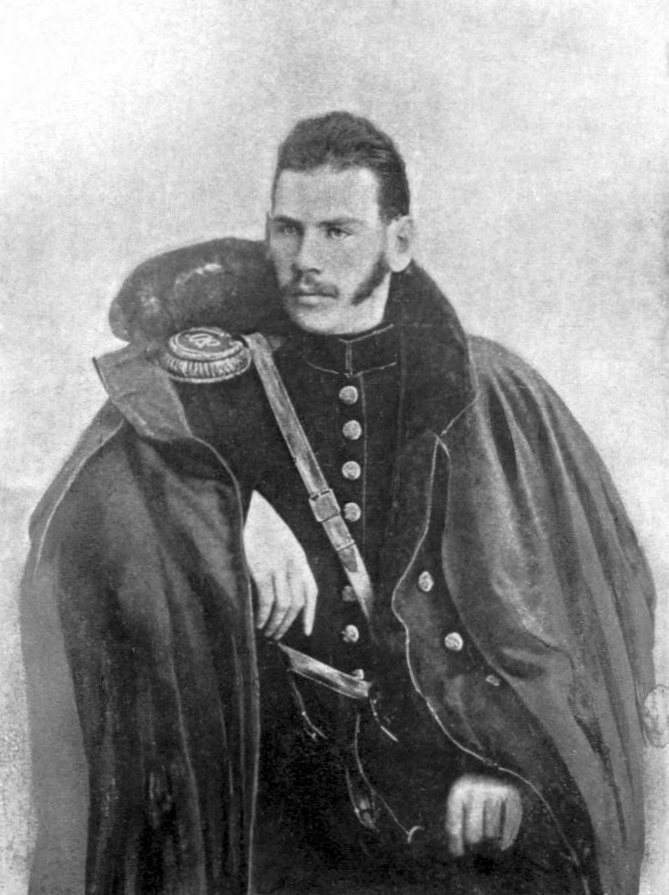Sebastopol Sketches on:
[Wikipedia]
[Google]
[Amazon]
The ''Sevastopol Sketches'' ( pre-reform ; post-reform ), translated into English as ''Sebastopol Sketches'' or ''Sebastopol Stories'' or ''Sevastopol Sketches or Stories'', are three short stories by
 ''Sevastopol in August'' depicts the conclusion of the siege of Sevastopol and the eventual defeat and withdrawal of the Russian forces. The narrative focus alternates between Mikhail and Vladimir Kozeltsov, two brothers who both fight and eventually die for the Russian side.
''Sevastopol in August'' depicts the conclusion of the siege of Sevastopol and the eventual defeat and withdrawal of the Russian forces. The narrative focus alternates between Mikhail and Vladimir Kozeltsov, two brothers who both fight and eventually die for the Russian side.
''Sevastopol''
from Marxists.org *
''Sevastopol''
from RevoltLib.com *
''Sevastopol''
from TheAnarchistLibrary.org *
English translation
at
Leo Tolstoy
Count Lev Nikolayevich Tolstoy Tolstoy pronounced his first name as , which corresponds to the romanization ''Lyov''. () (; ,Throughout Tolstoy's whole life, his name was written as using Reforms of Russian orthography#The post-revolution re ...
published in 1855 to record his experiences during the previous year's siege of Sevastopol
Sevastopol ( ), sometimes written Sebastopol, is the largest city in Crimea and a major port on the Black Sea. Due to its strategic location and the navigability of the city's harbours, Sevastopol has been an important port and naval base th ...
in Crimea
Crimea ( ) is a peninsula in Eastern Europe, on the northern coast of the Black Sea, almost entirely surrounded by the Black Sea and the smaller Sea of Azov. The Isthmus of Perekop connects the peninsula to Kherson Oblast in mainland Ukrain ...
. These brief "sketches" formed the basis of many episodes in Tolstoy's most famous novel, ''War and Peace
''War and Peace'' (; pre-reform Russian: ; ) is a literary work by the Russian author Leo Tolstoy. Set during the Napoleonic Wars, the work comprises both a fictional narrative and chapters in which Tolstoy discusses history and philosophy. An ...
''.
Sketches
''Sevastopol in December''
In ''Sevastopol in December'', Tolstoy uses second-person narrative (with the pronoun "you") in an introductory tour of life in Sevastopol. The detailed tour is arguably similar to one Tolstoy may have been given upon arrival in Sevastopol in November 1854. As part of the tour, the narrator takes you through the dressing-station or makeshift hospital in the Assembly Hall. Here you find wounded soldiers, amputees, "some of them on camp beds, but most of them lying on the floor".Tolstoy, Leo. ''The Cossacks and Other Stories''. London, New York. Penguin, 2006. 188. Print. Tolstoy introduces the reader to the settings, mannerisms, and background he later uses in ''Sevastopol in May'' and ''Sevastopol in August''. For example, the British and French enemy are referred to as "'him', as both soldiers and sailors say" (Tolstoy 198).''Sevastopol in May''
In ''Sevastopol in May'', Tolstoy examines the senselessness and vanity of war. The story examines many aspects of the psychology of war, heroism, and the misleading humanism in truces which invariably end in more wars. Tolstoy concludes by declaring that the only hero of his story is truth.''Sevastopol in August''
 ''Sevastopol in August'' depicts the conclusion of the siege of Sevastopol and the eventual defeat and withdrawal of the Russian forces. The narrative focus alternates between Mikhail and Vladimir Kozeltsov, two brothers who both fight and eventually die for the Russian side.
''Sevastopol in August'' depicts the conclusion of the siege of Sevastopol and the eventual defeat and withdrawal of the Russian forces. The narrative focus alternates between Mikhail and Vladimir Kozeltsov, two brothers who both fight and eventually die for the Russian side.
See also
* Leo Tolstoy bibliographyReferences
External links
* English Text *''Sevastopol''
from Marxists.org *
''Sevastopol''
from RevoltLib.com *
''Sevastopol''
from TheAnarchistLibrary.org *
English translation
at
Project Gutenberg
Project Gutenberg (PG) is a volunteer effort to digitize and archive cultural works, as well as to "encourage the creation and distribution of eBooks."
It was founded in 1971 by American writer Michael S. Hart and is the oldest digital li ...
(1888 translation by Isabel F. Hapgood)
* (Hapgood translation)
Books by Leo Tolstoy
Works about the siege of Sevastopol (1854–1855)
1855 books
Second-person narrative fiction
Crimean War books
{{mil-hist-book-stub